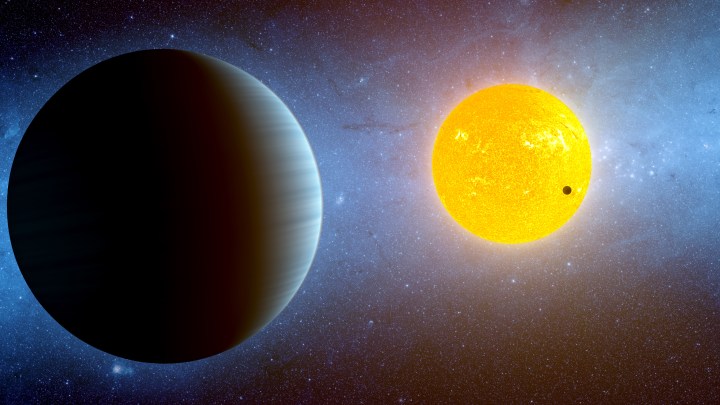Astronomers have discovered an Earth-sized exoplanet with an unusually extreme climate where one half of the planet is thought to be covered in lava. The planet HD 63433 d is tidally locked, meaning one side of it always faces its star while the other half always faces out into space, creating a huge difference in temperatures between the planet’s two faces.

NASA’s TESS (Transiting Exoplanet Survey Satellite) discovered that the planet HD 63433 d is about the size of Earth at 1.1 times the diameter of our planet, and that the star it orbits is similar to our sun, with 91% of the sun’s size and 99% of its mass. But what makes this exoplanet so different from Earth is its orbit, which is extremely close to its star. It completes an orbit of its star in just 4.2 days, making it eight times closer to its star than Mercury is to the sun.
As it is so close, it has tremendously high surface temperatures that can reach up to 2,294 degrees Fahrenheit (1,257 degrees Celsius) on the side facing the star. This is so hot that it has likely burned away any atmosphere that might have formed. In fact, the entire side facing the sun, called the dayside, could be a “lava hemisphere.”
The system that the planet is located in is also different from our solar system in that it is around 10 times younger. The planet itself is only 400 million years old. The system has two other planets as well, HD 63433 b and c, which are both larger at around 5 times 7 times the mass of Earth, respectively. They also orbit slightly further out, with orbits of 7 days and 20 days, respectively.
The new planet was discovered using TESS, which spots exoplanets by looking at their host stars. As planets outside our solar system are much smaller and dimmer than stars, they are very difficult to spot directly. So TESS uses a technique called the transit method, which observes a host star and looks for a small dip in its brightness that happens when a planet passes in front of it. By observing how often these dips in brightness occur and for how long they last, scientists can learn about the planets which must be causing them.
The research is published in The Astronomical Journal.
Editors’ Recommendations
Services Marketplace – Listings, Bookings & Reviews